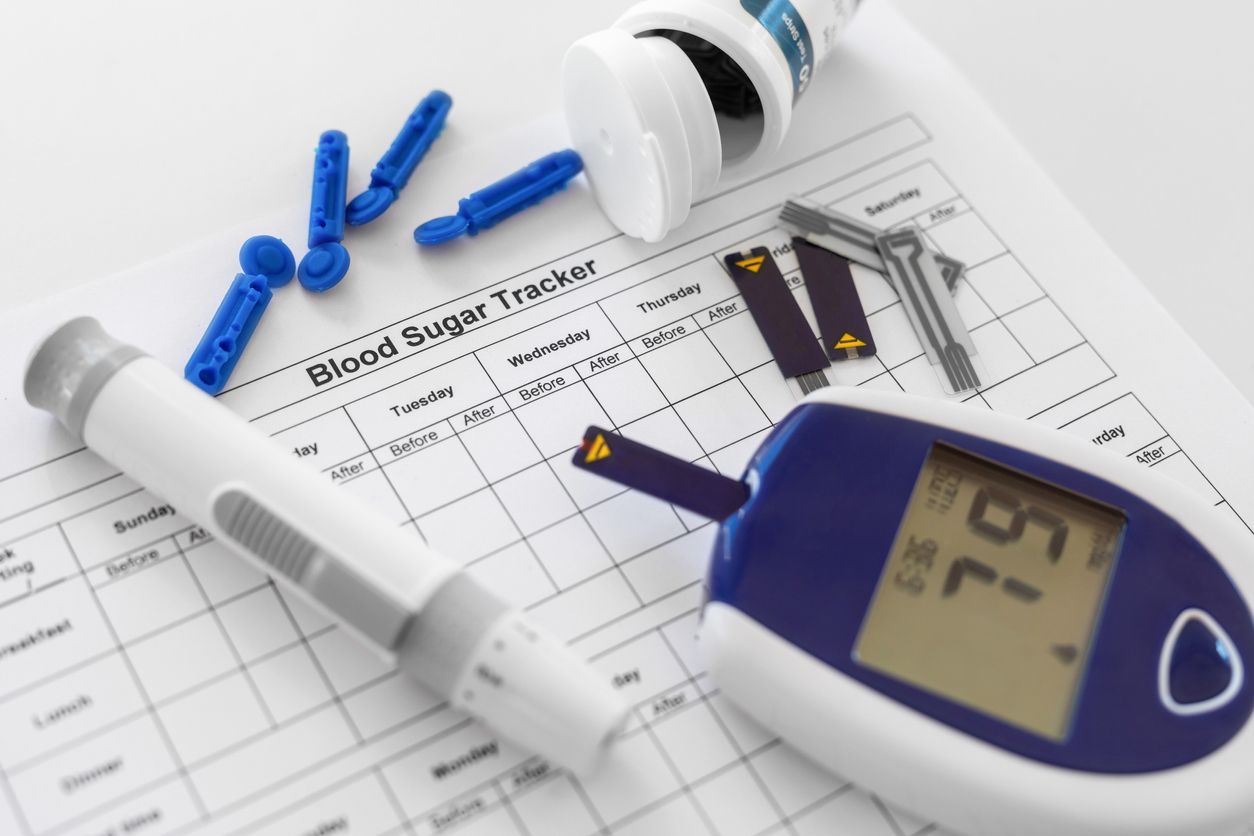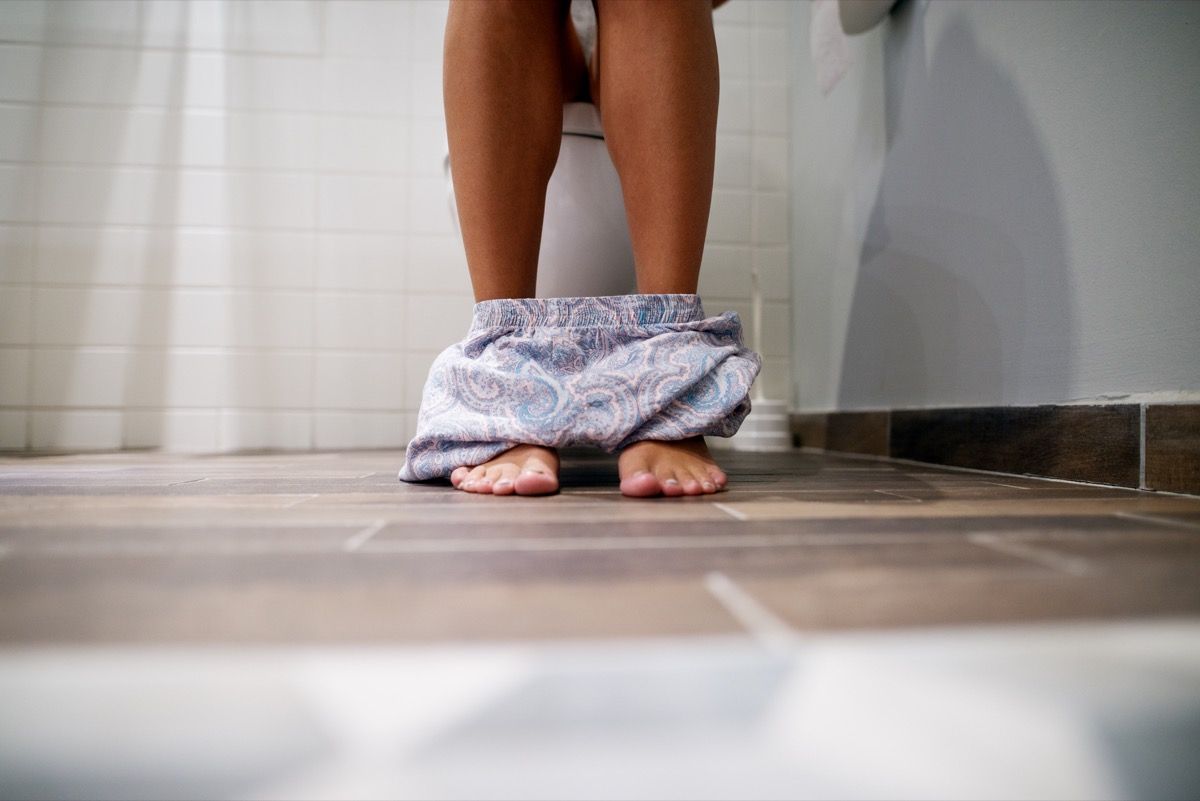Do This to Reduce Diabetes Symptoms
Given the prevalence of Type 2 diabetes in the United States—90 to 95 percent of the 37 million people with diabetes in the U.S. have this type of the disease—it might surprise you to learn that there are many ways to decrease your risk of developing it. And while there isn’t a cure for Type 2 diabetes, the condition can be managed with lifestyle and medication. Drinking a certain amount of coffee each day, for example, can help reduce your diabetes risk, as can maintaining a healthy weight.
Knowing the risk factors and symptoms is another helpful tactic (especially since some symptoms of diabetes aren’t commonly known). And then there’s one particular lifestyle choice that can reduce your symptoms of the disease and may even reverse diabetes in some patients. Read on to find out what it is.
READ THIS NEXT: If You Notice This in the Bathroom, Get Checked for Diabetes, Experts Say.

There are two main types of diabetes—and although they sound similar, they are “different diseases with unique causes,” explains Healthline. “The key difference between Type 1 and Type 2 diabetes is that Type 1 is believed to be caused by an autoimmune reaction and develops early in life,” says the site. “Type 2 diabetes develops over the course of many years and is related to lifestyle factors such as being inactive and carrying excess weight.”
While the disease frequently occurs in adults, an increasing number of children, teens, and young adults are developing it, notes the Centers for Disease Control and Prevention (CDC).

The signs of Type 2 diabetes can be slow-developing, or there may be no symptoms at all at first. “You might not know that you have Type 2 diabetes until it affects your health,” warns WebMD. “About one in four people with the condition don’t know that they have it.” When symptoms do appear, some of the more typical ones include increased hunger and thirst, frequent urination, and severe fatigue, the site says. And raised levels of blood sugar can result in a slower blood flow, affecting the way your body heals and resulting in sores or infections that don’t get better.
However, because Type 2 diabetes causes increased blood sugar levels, which can have a wide-ranging effects, other symptoms are less well-known and harder to catch. These include darkened areas of the skin (called acanthosis nigricans); experiencing blurry vision, especially after eating; and numbness or tingling in the hands and feet.

“Approximately 70 percent of people who begin exercising 150 minutes per week and making small dietary changes are able to reduce Type 2 diabetes symptoms,” says Joel French, PhD, head of fitness science at Tempo. “Starting slow, working with a professional who understands Type 2 diabetes, and forming an exercise habit are important steps. Many people are able to reverse early-stage Type 2 diabetes with exercise and dietary changes.”
The decision to practice a healthy lifestyle that encompasses both diet and exercise can make a huge difference for people with Type 2 diabetes. “There are quite a number of dietary changes that lower blood sugar,” as well as a few different types of kinds of physical exercises, advises Jill Weisenberger, MS, RDN, and creator of The Prediabetes Meal Planning Crash Course.
For more health news sent directly to your inbox, sign up for our daily newsletter.

Weisenberger recommends three types of activities: aerobic exercise, strength training, and reducing sedentary behavior. “Too much sitting is linked to poorer blood sugar control and other problems related to heart disease and Type 2 diabetes,” explains Weisenberger. “Aim to break up sitting with three minutes of movement every half hour when possible.”
When it comes to diet, “Giving up sugary drinks like lemonade and sodas is going to be key for anyone drinking them,” Weisenberger says. Another way to lower blood sugar involves adding beans, peas, and lentils to your diet. Weisenberger stresses that fiber, carbohydrates, portion control, and frequency of eating are also important.
She recommends “filling half your plate with non-starchy vegetables like carrots, tomatoes, broccoli, asparagus, with the other half divided evenly between starchy foods such as brown rice, whole-wheat bread, butternut squash, potatoes, and corn, and protein foods like cottage cheese, salmon, tilapia, steak, and chicken.”
" Conservative News Daily does not always share or support the views and opinions expressed here; they are just those of the writer."

Now loading...